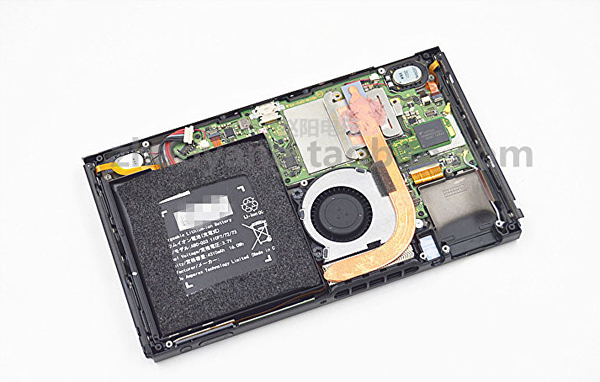Dear Reader:
Switch teardown analysis shows new performance mode that boost mobile clocks by 25 per cent
- 4310mAh, 16Whr battery takes up a good portion of the internal space
- Switch is held together by screws
- detachable MicroSD card reader
- it seems to sit on top of the heat-shield when the unit is first opened
- 32GB of eMMC NAND storage also seems to occupy its own mini-daughterboard
- CPU: Four ARM Cortex A57 cores
- GPU: 256 CUDA cores
- Architecture: Nvidia second generation Maxwell
- Texture: 16 pixels/cycle
- Fill: 14.4 pixels/cycle
- Memory: 4GB at 1331.2MHz/1600MHz
- Memory Bandwidth: 25.6GB/s
- VRAM: Shared
- System memory: 32GB, max transfer rate: 400MB/s
- USB: USB 2.0/3.0
- Video output: 1080p60
- Display: 6.2-inch IPS LCD, 1280x720 pixels, 10-point multi-touch support
- updates to aspects such as clock-speeds are added in further SDK updates
- SDK version 4.1
- one of the four ARM cores is reserved for the system
- Switch may reserve 10 per cent of GPU time for the system too.
- the Chinese teardown strongly suggests that Switch does indeed use a mildly tweaked Tegra X1
- a heat pipe siphons heat away from the Nvidia Tegra processor
- active cooling is available to stop the processor overheating
- in docked mode, the GPU clocks generally rise by a factor of 2.5x
- 2GB LPDDR4 memory modules
- Nvidia Tegra processor was tested for several days straight with CPU clocks operating at 1.78GHz
- the GPU pushed to 921MHz
- this is representing a 20 per cent boost in terms of GPU power (921MHz vs 768MHz) and a 75 per cent bump to CPU power
- physical size of the chip is seemingly unchanged from existing 20nm Tegra X1 SoC.
- processor is surrounded by the same surface-mounted arrangement of what are likely to be decoupling capacitors
- seems to be a lightly modified X1, still on the 20nm process
- Nintendo has added to the available performance modes available to developers in a recent update
- Undocked 1020MHz 307.2MHz/384MHz 1331.2MHz
- Docked 1020MHz 307.2MHz/384MHz/768MHz 1331.2MHz/1600MHz
- developers can opt for a 384MHz GPU clock, a straight 25 per cent uplift in compute power
- adjustments have been made to available memory bandwidth
- 1600MHz option is now only available in 'boost mode' - when Switch is docked
- 1600MHz support in mobile mode is deprecated
- not all games will use the 384MHz GPU mobile mode
- Shield uses two 1.5GB modules, while Switch ups that to a 2x 2GB configuration for 4GB of total system memory
- under load, the highest power drawn seen so far is 16W
